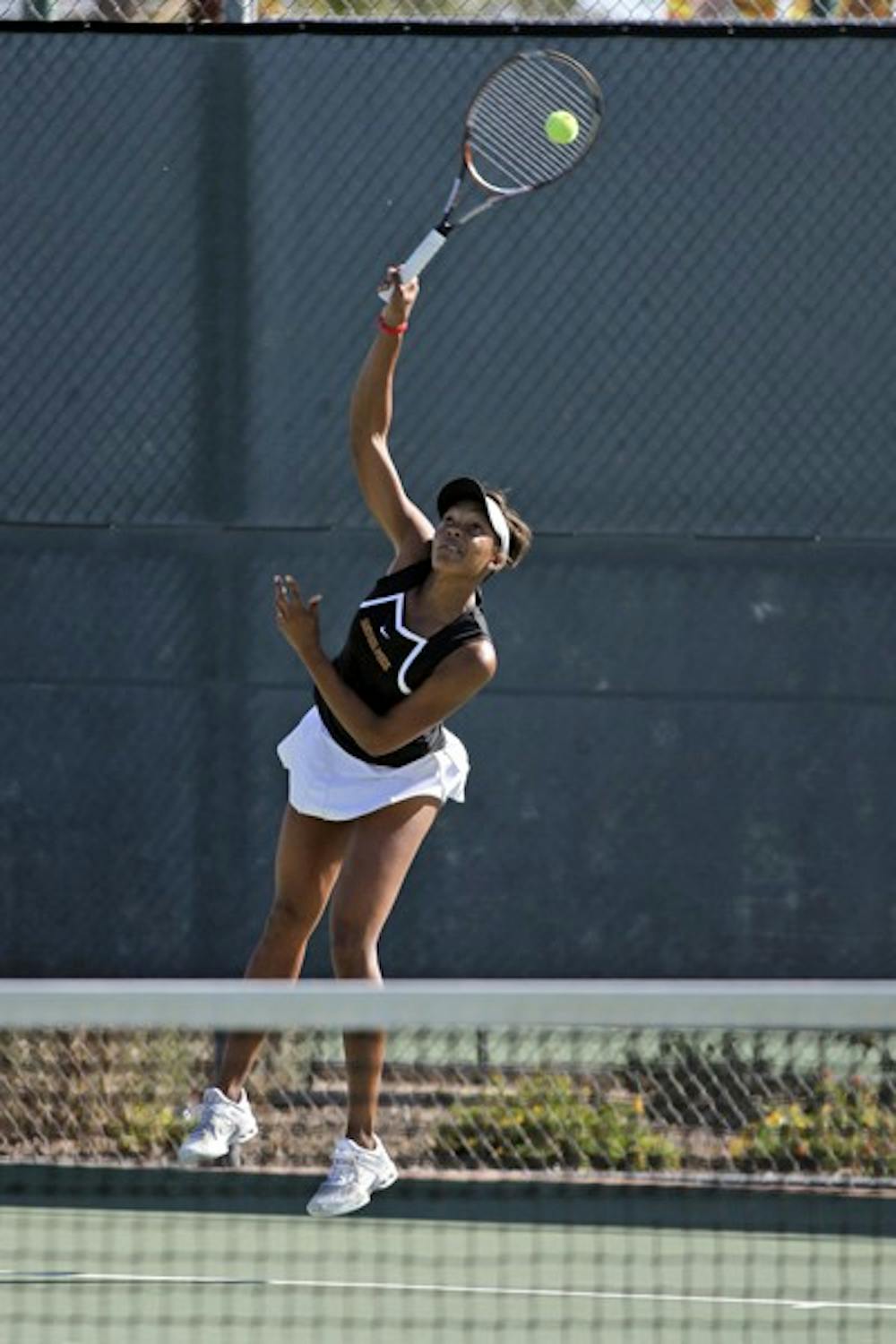Name three American women that play professional tennis.
After the Williams sisters, it’s hard to find another American in a sport filled with talented international players.
That same international feel has made its way to college tennis courts.
In order to stay competitive with the nation’s top tennis programs, many schools have turned to these foreign athletes for a boost.
“There are so many more tennis programs now … and everybody is trying,” ASU coach Sheila McInerney said. “The supply can’t keep up with the demand for U.S. kids.”
At the beginning of her career at ASU, McInerney said the expectations for women’s tennis didn’t go much further than running a good program, graduating the athletes and keeping them out of trouble.
Now the competitive level is much higher.
More than 300 college programs are looking for the best athletes, each with eight scholarship positions.
That’s more than 2,500 available scholarships in the United States.
It’s the lack of American tennis players that has schools without big name programs looking for other options in order to keep up with schools such as Stanford.
The Cardinal is known as the most prestigious women’s tennis program in the country.
The team has finished as the national champion or runner-up in 20 of 28 NCAA Championships.
Coincidently, Stanford has no problem recruiting American tennis players and doesn’t have a single international player on its roster.
“If you’re in California, it’s hard to turn down [USC], UCLA, Stanford or Cal,” McInerney said.
The Sun Devils have two Californians on their roster in senior Nadia Abdala and junior Micaela Hein.
“We do a lot of recruiting to hone in on some of these kids that turn out pretty darn well, even though they might not have been recruited by the Stanfords, the Cals and the [USCs],” McInerney said. “Then you’ve got to do a really good job of developing, too.”
Then comes the competitive side.
The demand for victory increased when the Directors Cup was created in 1993 to compare each university’s overall athletic performance.
“Once you had the Directors Cup … that’s when everything changed,” McInerney said. “Not only do you compare everybody’s tennis program or their golf program or their football program, but you’re comparing their overall entire athletic departments. Now everything counts.”
That need for winning trickled down to every sport at the university. Tennis programs without the powerhouse reputation couldn’t get top American athletes, forcing them to look elsewhere.
The ASU women’s tennis team has four international players, two of which are freshman, including Hannah James from Great Britain, who joined the team over the winter.
“We probably couldn’t get an American of Hannah’s ability,” McInerney said. “The 2011 class will have three scholarships, and it will be hard-pressed to get three good Americans.”
The easiest example involves the nation’s No. 2 ranked team.
Baylor has only one American born player on its team.
It’s possibly one of the only schools with a name pronunciation guide attached to its roster, but it still must be difficult to pronounce Lenka Broosova, Karolina Filipiak and Jelena Stanivuk in the same sentence.
McInerney said she completely understands why that team has so many international players.
“Kids aren’t going to go to Waco, Texas over Stanford,” she said. “If they want to compete, they’ve got to go international.”
Then there is the controversy.
Most college team sports like football, basketball and baseball don’t use a large amount of international athletes.
The foreign-laced rosters in tennis can scare people, but McInerney knows that winning can cure those fears.
“Bottom line is, people want to win,” she said. “If you’re going to put this much money into it, you’re going to want to win. You’ve got to get the best players wherever they come from. People don’t usually ask you how many international players are on your team. The first questions they ask is, ‘What’s your rankings?’”
The advancement of technology has also helped the movement of international athletes.
Coaches are now contacted via e-mail by recruiting agencies across the world. Before then there was little to no way of contacting the athletes.
Foreign players are also getting a chance to do something they might not have been able to do in their home country: play tennis and go to school at the same time.
“These international players are realizing what a great deal it is,” McInerney said. “In international countries, they don’t have college tennis. They either turn professional or go to college. They can’t do both.”
The equation to win always tends to involve the best athletes, but to stay competitive in tennis looking for the best athletes in other countries may be the best course, even if their names are hard to pronounce.
Reach the reporter at nathan.meacham@asu.edu





